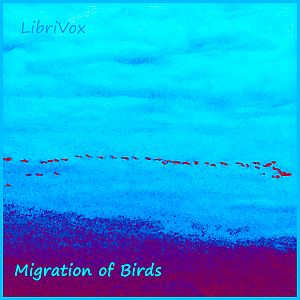Migration of Birds
Snow Geese which left James Bay, Canada, arrived at the Louisiana Gulf coast "60 hours later after a continuous flight of over 1,700 miles at an average speed of 28 miles per hour." This is just one of the many intriguing facts about bird migration contained in this 1998 circular from the U.S. Fish and Wildlife Service. Informative and up-to-date chapters discuss flight speed and rate of migration, migration routes, and techniques for studying migration. A final chapter, Future Directions, concludes "Migratory pathways evolved over the eons in expectation of a moderately stable environment with sufficient food and cover along appropriate corridors that connected sustaining winter ranges with suitable breeding areas... But human impacts on the environment generate rates of change that exceed many species' ability to adapt." Summary by Sue Anderson.
Genre(s): *Non-fiction, Animals
Language: English
| Section | Chapter | Reader | Time |
|---|---|---|---|
| Play 00 | Preface | Sue Anderson |
00:03:37 |
| Play 01 | Introduction | Sue Anderson |
00:07:24 |
| Play 02 | Early Ideas About Migration | Sue Anderson |
00:08:34 |
| Play 03 | Techniques for Studying Migration | Sue Anderson |
00:16:50 |
| Play 04 | Evolution of Migration | Sue Anderson |
00:13:23 |
| Play 05 | Stimulus for Migration | Sue Anderson |
00:10:02 |
| Play 06 | When Birds Migrate | Sue Anderson |
00:17:44 |
| Play 07 | Flight Speed and Rate of Migration | Sue Anderson |
00:19:02 |
| Play 08 | Migratory Flight Altitude | Sue Anderson |
00:06:30 |
| Play 09 | Segregation During Migration | Sue Anderson |
00:12:10 |
| Play 10 | Geographic Patterns of Migration | Sue Anderson |
00:12:54 |
| Play 11 | Orientation and Navigation | Sue Anderson |
00:18:16 |
| Play 12 | Influence of Weather | Sue Anderson |
00:08:51 |
| Play 13 | Influence of Topography | Sue Anderson |
00:04:38 |
| Play 14 | Perils of Migration | Sue Anderson |
00:08:28 |
| Play 15 | Routes of Migration | Sue Anderson |
00:42:14 |
| Play 16 | Patterns of Migration | Sue Anderson |
00:27:44 |
| Play 17 | Future Directions | Sue Anderson |
00:10:27 |
